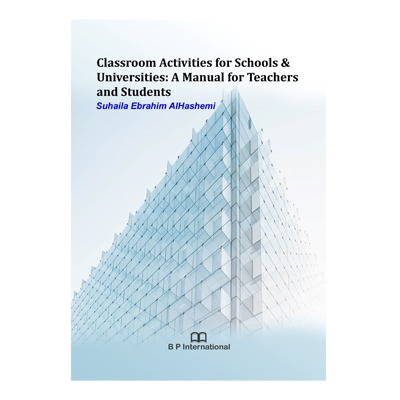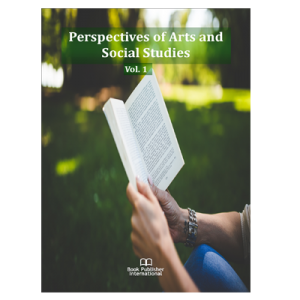Purpose of the Book:
The aim of the book is to provide students and teachers with a quick handbook on activities and exercises that can be used in the classroom, all in one book both in both Arabic and English language. The book combines an overview of important concepts in learning, the process and stages. This important resource offers both university and school students as well academics with a practical guide for all the activities that can help build on knowledge, skills, creativity, thinking, analysis and development. It enables students to understand some concepts and theories in a practical and more interesting way, as well as changing the class routine. The handbook combines material from various sources as well the author’s own activities reflecting on her 27 years of teaching experience. The activities and exercises can be modified to suit various topics and specializations as well as different levels of students. They have been applied and practiced before being compiled it in this handbook. Numerous researches have proved the relationship between a positive classroom environment and students’ motivation and productivity. This is achieved through careful preparation and planning class sessions through assessment and activities implemented in the sessions/classes. The activities enable more student interaction and participation in class as well as bringing change and learning in a more fun and creative environment.
The book is divided into six chapters as follows:
Chapter 1 is an overview of learning and teaching, basic concepts and theories of learning and teaching. The important outcome of this chapter is establishing the concepts and definitions of teaching and learning, highlighting the importance of understanding the various ingredients that lead to effective classroom learning. It covers issues on types of learning, teaching strategies and techniques and guidelines to effective application of activities. The chapter also gives an overview of emotional intelligence and its importance in achieving an effective learning environment.
Chapter 2 Starts with activities that can be used in the first week of classes as an icebreaker and enables students to monitor their progress and helps the facilitator or teacher to follow up on the progress at the end of a semester or the school year. The chapter illustrates the purpose, method and materials needed for each activity and a reflection on the author’s experience and guidelines on the activities.
Chapter 3 Looks at the activities that can be practiced during the semester to engage students in participating and learning. The chapter covers the activities that help build students’ self-confidence, understanding of themselves and of others. The chapter also highlights activities that help teachers and facilitators to get feedback from the students as to how well they are learning, are they experiencing any difficulties? What are some of the weaknesses in the class and what needs to be done?
Chapter 4 Provides additional material that facilitators could utilize in their classes. The chapter also presents publications by the author on emotional intelligence in schools in Oman that would enable the facilitator to have a more understanding of the effect of EI training in classrooms. The outcome of the research would also contribute to comprehending the association to the culture in Oman and may open the door for further research.
Chapter 5 Lists all the references and sources used.
The novel features of this book are as follows:
It covers concepts, definition, cases and activities in teaching and learning, selected from the author’s experience and various sources such as educational websites, books and journals.
Throughout the book there are case studies, exercises, activities and tips for teachers and facilitators as well as students. The purpose is to engage students, create an interactive learning environment, have fun, break the routine and at the same time understand the topics or concepts explained.
The activities also help students to evaluate and understand the course module, build up on their skills, and be more motivated to engage in learning. The book includes tables, illustrative figures and pictures of the classroom setting. Moreover, the book provides references and websites for teachers, facilitators, trainers to obtain further information related to teaching and learning as well as training.





